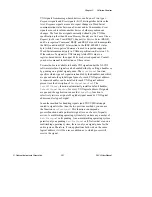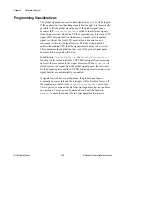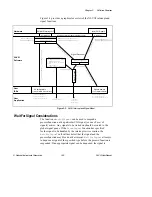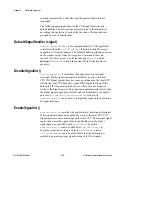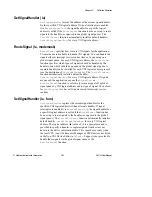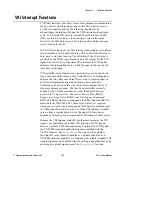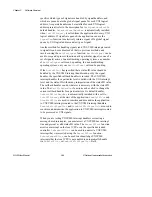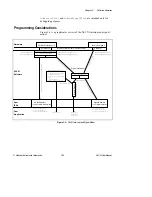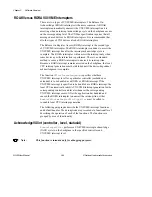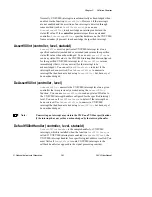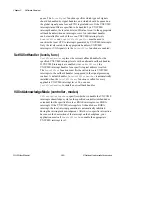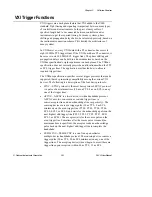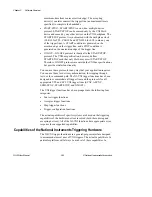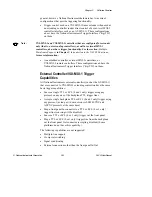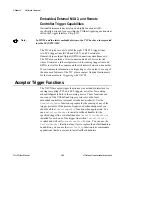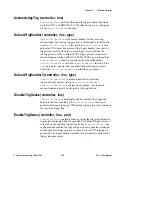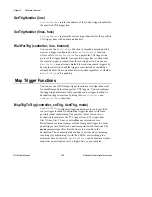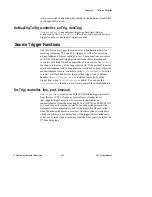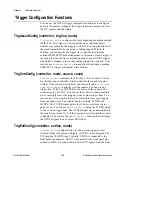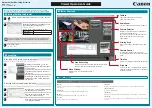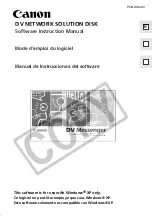
Chapter 3 Software Overview
NI-VXI User Manual
3-44
© National Instruments Corporation
specifies which types of signals are handled by signal handlers, and
which are queued onto the global signal queue for each VXI logical
address. A separate handler can be installed for each VXI logical
address present (refer to the description for
SetSignalHandler
). A
default handler,
DefaultSignalHandler
, is automatically installed
when
InitVXIlibrary
is called from the application for every VXI
logical address. If signals are queued, the application can use the
SignalDeq
function to selectively return a signal off a global signal
queue by VXI logical address and/or type of signal.
Another method for handling signals (and VXI/VME interrupts routed
to signals) can be used instead of the two previous methods, and
involves using the
WaitForSignal
function.
WaitForSignal
can be
used to suspend a process/function until a particular signal (or one of a
set of signals) arrives. In a multitasking operating system, any number
of
WaitForSignal
calls can be pending. In a nonmultitasking
operating system, only one
WaitForSignal
call can be pending.
If the
RouteVXIint
has specified that a status/ID value should be
handled by the VXI/VME interrupt handler and not by the signal
handler, the specified callback handler is invoked. The VXI/VME
interrupt handler for a particular level is called with the VXI interrupt
level and the status/ID without any interpretation of the status/ID value.
The callback handler can do whatever is necessary with the status/ID
value. The
SetVXIintHandler
function can be called to change the
current callback handler for a particular level. A default handler,
DefaultVXIintHandler
is automatically installed with a call to
InitVXIlibrary
at the start of the application.
EnableVXIint
and
DisableVXIint
are used to sensitize and desensitize the application
to VXI/VME interrupts routed to the VXI/VME interrupt handlers.
EnableVXItoSignalInt
and
DisableVXItoSignalInt
are used to
sensitize and desensitize the application to VXI/VME interrupts routed
to be processed as VXI signals.
When you are testing VXI/VME interrupt handlers or creating a
message-based interrupter, you must assert a VXI/VMEbus interrupt
line and present a valid status/ID value. The
AssertVXIint
function
asserts an interrupt on the local CPU or on the specified extended
controller.
DeAssertVXIint
can be used to unassert a VXI/VME
interrupt that was asserted using the
AssertVXIint
function.
AcknowledgeVXIint
can be used to acknowledge VXI/VME
interrupts that the local CPU is not enabled to automatically handle
via
EnableVXIint
or
EnableVXItoSignalInt
. Both








